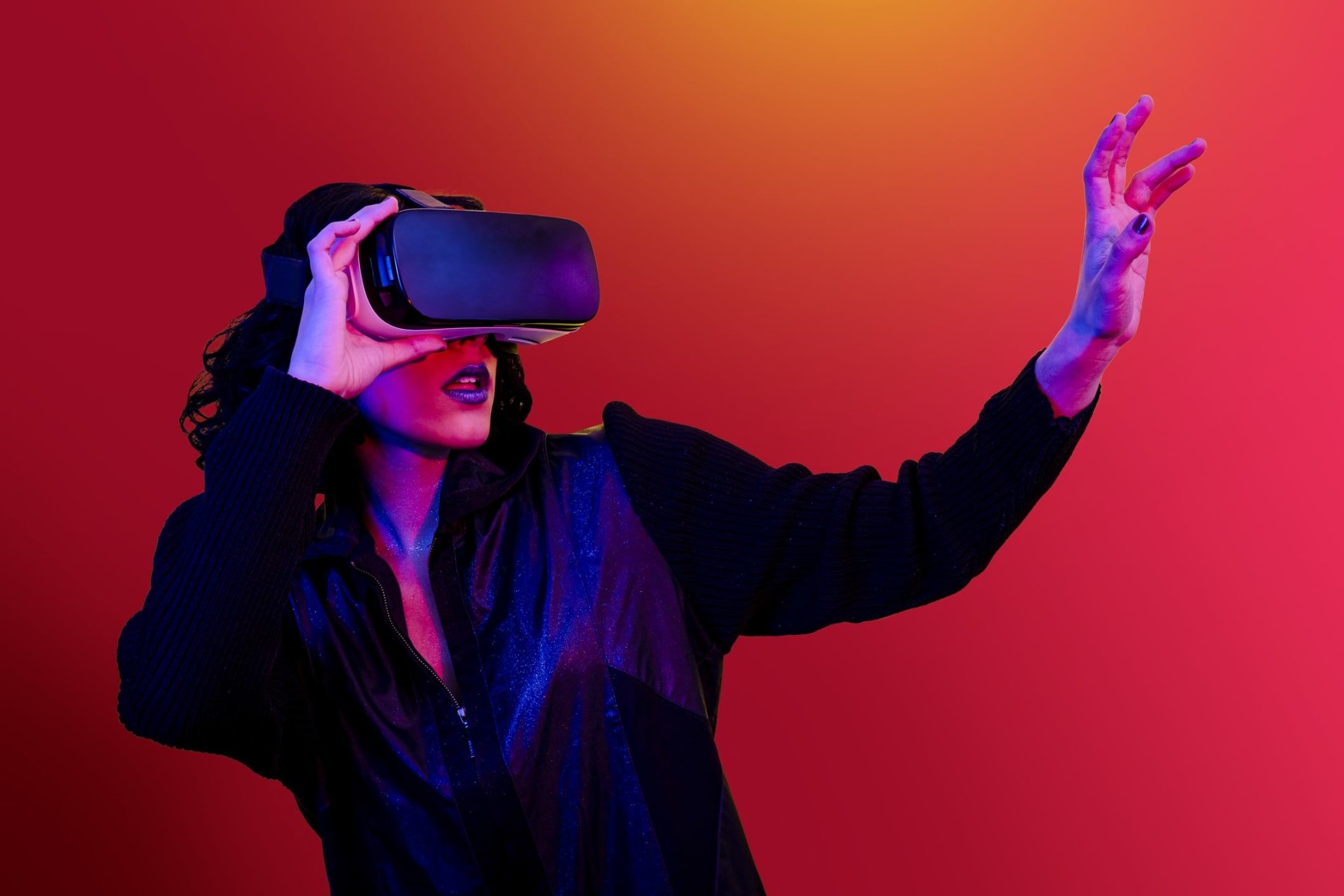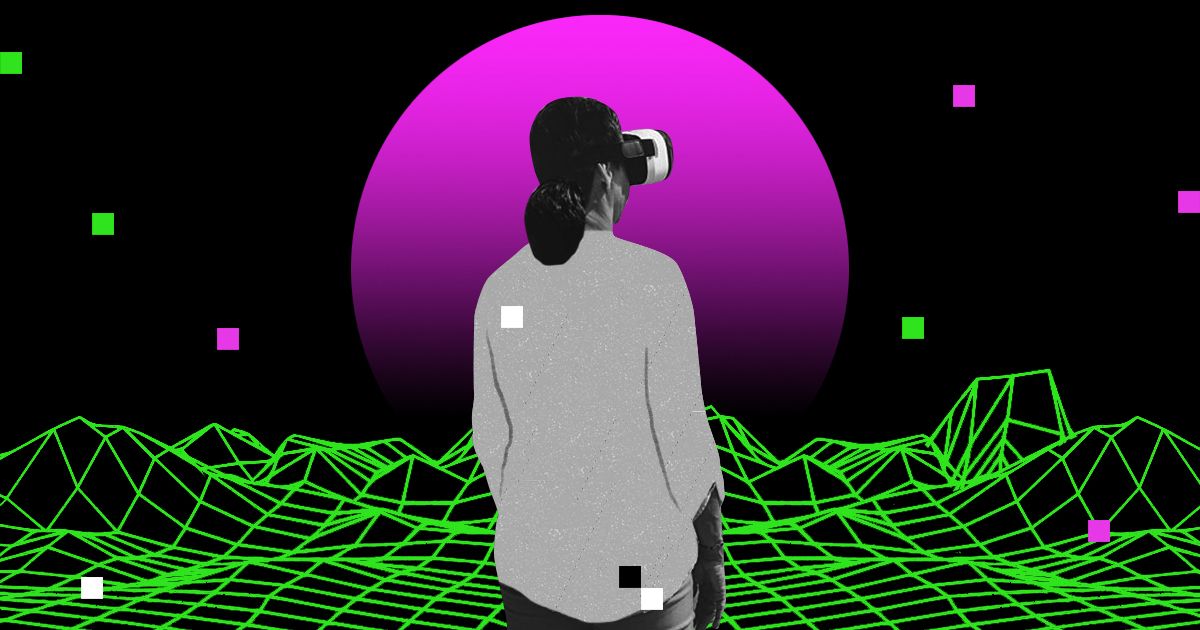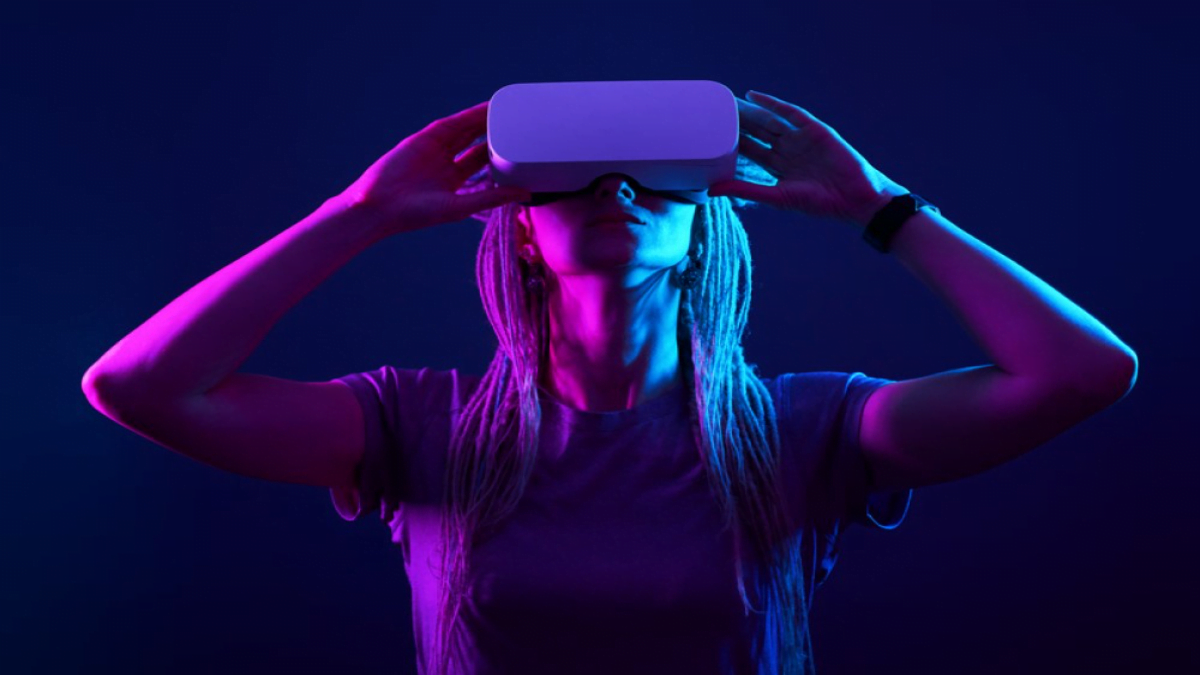Trigger Warning: Mention of virtual rape
2024 turned a new leaf in the history of sexual violence as the British police opened the first investigation of its kind, inquiring into the sexual assault of a minor girl in the metaverse. While the UK police are trying to navigate this new terrain one wonders what is in store for India. Is India ready to tackle the vast possibilities of virtual violence?
The report stated that the girl was wearing a virtual reality headset and playing an immersive game on the Metaverse when some other players ambushed her and attacked. The first course of questioning would be – was this rape? Rape in plain terms is non-consensual sexual conduct. The character in the game was forced to have sex in virtual reality by other characters that she did not consent to. But what is human experience in virtual reality as opposed to what we know as real? The answers are not well-formed but extremely important and need our sincere attention.

Back in 2022, 60 seconds after stepping into the metaverse, Nina Jane Patel, her avatar, was surrounded by multiple male avatars and groped. To make matters worse Nina recounted how the avatar was followed as she tried to move away and messages like ‘Don’t pretend you didn’t love it’ were hurled. ‘A horrible experience that happened so fast and before I could even think about putting the safety barrier in place. I froze,’ she shared in an interview ‘It was surreal. It was a nightmare.’ This is a nightmare unlike any we have experienced or anticipated.
The emotional and psychological impact of the experience is longer in term than any possible physical injury that could have been caused
Spark Jonze’s Theodore falls in love with his AI companion Samantha in Her (2013) with the most humane ease that made us question our relationship with the virtual world. In a 1993 piece for Village Voice, Julian Dibbel explored the idea of ‘rape in the cyberspace’. It indicated how avatars in the virtual space felt the emotions of someone who has experienced physical assault. The senior investigating officer from the recent case told the Daily Mail that the emotional and psychological impact of the experience is longer in term than any possible physical injury that could have been caused. Now, let us imagine how this would go in the Indian context that already struggles to acknowledge rape in the absence of enough evidence. From ‘Why did she not fight back?’ to ‘Why did she not take off her headset?’ – it shall be a short walk for the victim-blamers.
From ‘Why did she not fight back?’ to ‘Why did she not take off her headset?’ – it shall be a short walk for the victim-blamers.
The current Indian climate, in tandem with global polarisation, is extremely unstable. From the offended public to propaganda bots – rape threats are a dime a dozen. What happens when all the potent textual warfare is left open in the virtual world – still away from physical harm in that space but quite well simulated nevertheless? There is no way anyone can see a happy and cheerful answer to this rather rhetorical question. The virtual space continues to grant the enjoyment of anonymity while drawing as much of the human experience as possible. ‘I believe that the metaverse is the next chapter of the internet. Just like we had the mobile internet, I think this is going to be the successor to that,’ Mark Zuckerberg said.

While it is blood-curdling to listen to him casually declare the sharp turn ahead, it is also important to accept the inevitable and prepare for it. In a brief conversation with the Head of the Interaction Design Department at Anant National University, Professor Vijay Sekhon, he shared his thoughts on what is to come with FII, ‘The synthetic world which we are building is becoming more pervasive and coupled with AI it is going to be more predictive. This will be needed to synthesise vast amounts of data that we will be generating. But the real challenge is to move away from a more probabilistic world to a world full of more possibilities. Because the world full of possibilities is a fundamental human trait and that goes against the probabilistic world that is being built. And our design of this world will be dependent on the realisation of this very fundamental difference.’
‘Emotions rising in the synthetic world will be at par with any in the real world. Rules and regulations will have to be reviewed periodically as technologies evolve’
In a recent lawsuit against Meta, 33 US states are suing the organisation for knowingly inducing mental health issues in young children – from addictive behaviour to compulsive usage. In 1999, Britain was the first country to ban cloning. After several years of many countries adopting this ban with some tweaks and changes in 2005, the United Nations adopted the Declaration on Human Cloning in an attempt to ban the possibilities of human cloning – albeit the ambiguously worded charter leaves a lot of room for taking liberties. We have reached the dangerous state of officially establishing the second world that God-adoring humans coded in an attempt to become Him. It is probably time to take serious stock of the policies and overhaul whatever we can to undo the speed at which technology is advancing without paying heed to the socio-political implications and most importantly the changes in human behaviour and experiences.
Vijay added, ‘To differentiate between the synthetic/virtual world and the real is becoming difficult and our participation in the virtual world is as real as being in the world. Emotions rising in the synthetic world will be at par with any in the real world. Rules and regulations will have to be looked at and reviewed periodically as technologies evolve.’
It is also important we look at what loopholes can be closed in online interactive spaces that disallow certain algorithmic pathways or restrict them to a certain route (especially in the context of a structured system like a game).
The players were not wired to act out in this manner in the game the 16-year-old was playing before she was attacked. It is also important we look at what loopholes can be closed in online interactive spaces that disallow certain algorithmic pathways or restrict them to a certain route (especially in the context of a structured system like a game). Policies cannot only look at the human elements of crime in cyberspace but also the possibilities of what the code allows or restricts.

A recent NHRC report revealed that online CSAM (Child Sexual Abuse Material) has increased by 250 to 300 per cent on social media in India. In a country that is sexually repressed, where desire continues to be a taboo – the brunt is often borne by the minors of our society. We must ensure their safety online while also empowering them with both information and skills. Vijay says, ‘Drawing attention to matters of ethics in education will have to take a more important place as the young students today will be the designers of this world tomorrow. Our education must critically look at the impact of these emerging technologies for us to design a more humane world.’
The moral world of algorithms has been a topic of discussion for a long time which got amplified as we started getting acquainted with ChatGPT. Who is writing our codes? What biases do these algorithms carry within them because of their coders? Sexual harassment online has been a rampant menace, dating as old as 1993 when a user called Mr Bungle introduced a code on the platform LamdaMOO, overriding others’ controls – thereafter forcing the characters to perform sexual acts in the digital space. The textual assault is now possible in the simulacrum of the human world.
If we have not built a system that supports and safeguards sexual abuse survivors in the real world, what are the chances that we will be able to grant that in the virtual reality?
‘Increasingly any violation will have to be looked at like it has been seen in the real world as the boundaries between the real and the virtual blur.’, Vijay shared before signing off. While that is true, the other dark cloud hovering above us is – if we have not built a system that supports and safeguards sexual abuse survivors in the real world, what are the chances that we will be able to grant that in the virtual reality? Only time will tell but it is of the essence that we hold more public discussions and involve think tanks in formulating what the real world and the virtual will mean to the law – especially about sexual abuse and violence. Likewise, we must find a collective understanding of what consent is in the netiquette of virtual space. In the meantime, India must tread carefully in the “dark and shiny place” of virtual reality as our physical reality is already volatile.
About the author(s)
She/they is an editor and illustrator from the suburbs of Bengal. A student of literature and cinema, Sohini primarily looks at the world through the political lens of gender. They uprooted herself from their hometown to work for a livelihood, but has always returned to her roots for their most honest and intimate expressions. She finds it difficult to locate themself in the heteronormative matrix and self-admittedly continues to hang in limbo




